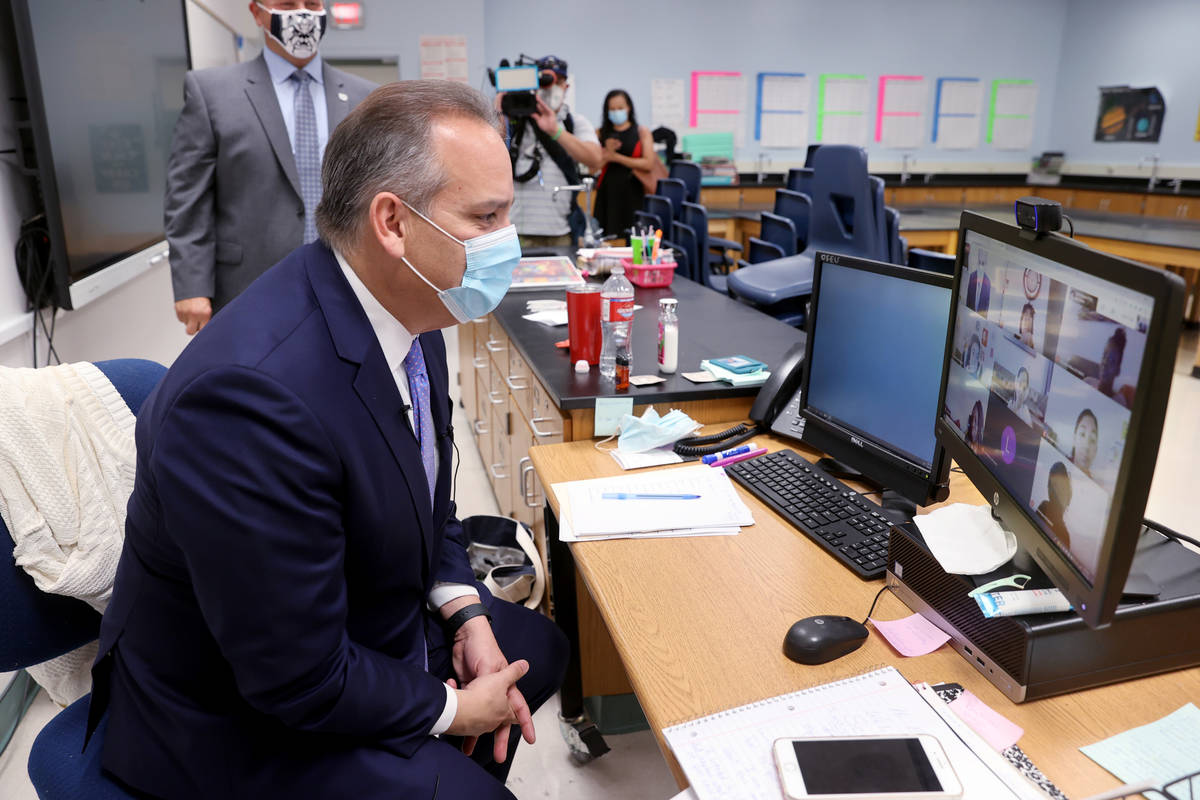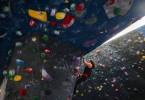VICTOR JOECKS: Per Jara’s logic, not reopening CCSD is racist
If he weren’t the one supporting it, Superintendent Jesus Jara might decry distance learning as an example of systemic racism, implicit bias or both.
Clark County School District data show distance learning is disproportionately hurting African American and Hispanic students. The average daily attendance for Black students is just 85 percent. That’s down 8.5 percentage points from last year. Among Hispanic students, attendance is 90 percent. That’s down 4.7 points.
Attendance by Asian and white students declined only slightly. Asian students show up 96 percent of the time, a drop of just 0.8 points from last year. White student attendance is 94 percent, a reduction of 1.5 points.
These figures are even more disturbing when you understand the district’s lax standard for attendance. The district counts students as present if they tell the teacher about their “progress.” They don’t have to complete coursework or ever show up to class.
That’s not the end of the racial disparities. White student enrollment dropped by almost 10 percent. Enrollment among Asian students is down 4.2 percent. But it fell just 0.8 percent among Black students and 2.6 percent among Hispanic students.
Asian and white students are weathering the disaster that is distance learning better than Black and Hispanic students. They are more likely to show up to class or to have found alternatives such as home-schooling and private school.
This means distance learning is creating a disparate impact. That’s shorthand for a policy that negatively impacts Blacks and Hispanics more than other racial groups.
Previously, Jara has strongly opposed race-neutral policies that created a disparate impact. Back when students went to class in person, Black and Hispanic students were more likely to be suspended. Jara implied that this was the result of racial bias among staff. A 2013 district report made the same assertion.
In response, Jara embraced restorative justice to reduce suspensions, even though that approach increased violence in schools around the country. He threatened principals whose schools showed “disproportionate discipline patterns,” according to a district news release. Nevermind actual student behavior. His goal was to make discipline numbers proportional to student body demographics.
Jara even gutted entrance requirements for magnet programs, asserting they contributed to the racial disparity among magnet students.
Jara is hardly alone in this perspective. In progressive circles, the mere existence of a racial disparity is now conclusive proof of “systemic racism.” Until leftists hijacked the term, systemic racism referred to a system that discriminated based on race, such as Jim Crow laws.
This puts Jara in a bind. By his own standard, he must be biased for refusing to reopen schools because the status quo is disproportionately harming minority students.
This standard, however, is mistaken. A disparate impact shouldn’t be considered definitive proof of systemic racism or racial bias among district leaders. Multiple variables influence outcomes among students. Family structure, family income and teacher quality are especially important. When there are multiple factors at work, it’s unusual to find one factor in perfect proportion among society at large.
For instance, think about the five men you know best. Unless their average height is 5-feet, 9-inches tall, your group is either taller or shorter than average. Imagine how absurd it would be for someone — based on that alone — to conclude you’re biased against tall or short men.
But that’s what Jara has done when it comes to race. Or at least he did. Now that he’s the one creating the racial disparity, he isn’t in any rush to fix it.
Victor Joecks’ column appears in the Opinion section each Sunday, Wednesday and Friday. Listen to him discuss his columns each Monday at 3 p.m. with Kevin Wall on AM 670 KMZQ Right Talk. Contact him at vjoecks@reviewjournal.com or 702-383-4698. Follow @victorjoecks on Twitter.





























